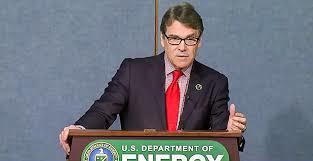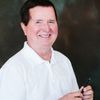
The Secretary issued a memo on April 14 of this year, with a missed completion deadline of five weeks ago, and a set of premises most industry observers found either troublesome or laughable. It’s not worth quoting in full but the wording strongly implied that the purpose of the study was to prove that renewable electricity projects endangered grid stability, and that the solution was more baseload coal and nuclear power plants, not fewer. The back story is President Trump’s vaunted promise to put coal miners back to work, even if no one is buying coal. Republicans usually like market forces, but in this case cheap natural gas and ever cheaper renewable power are what has caused 256 coal plants to shut down since 2010 and 44 coal companies to go bankrupt, including Peabody, the world’s largest coal company. In addition, more than half of the nuclear plants in the country are losing money.
There are three problems with the study’s hypothesis: more coal plants are needed to fix grid stability problems. First and most important, there doesn’t seem to be a problem with grid stability. There is zero evidence that the increasing penetration of renewables is endangering grid stability. And that penetration has reached interesting levels, even if only briefly. For example the Southwest Power Pool on February 12 hit 52.1% wind and the lights stayed on. Or how about California hitting 80.7% of its energy from renewables in May. California has the second highest amount of non-hydro renewable energy on the grid in the country. And yet, the reliability of the grid has in fact increased for each of the past ten years, according to a California PUC study. Correlation is not causation, and the point here is not that renewables are better for the grid, but that at these elevated levels, they don’t seem to be trouble makers. There is similar evidence from Europe where there are even higher levels of renewables, and the continent has yet to go black. Or how about Texas, Sec Perry’s home state, which now ranks number one in renewable energy—and isn’t troubled with blackouts. On 25 December of 2016, the state hit 16,022 MW of wind, 47% of total load. And nothing bad happened.
Second, baseload power is a bad way to attempt to fix the problems with wind and solar intermittency. What challenges grid operators is not that solar plants are intermittent, as is wind to a lesser extent, but that they are unpredictably intermittent. That the sun doesn’t shine at night is reasonably well understood, even by us slow thinkers in the electric biz. A larger problem is that a solar installation can lose 90 percent of its power when a cloud crosses the sun—in ten seconds to a minute. And when the cloud moves on, the plant output shoots back up in less than a minute. This is dramatic and difficult to deal with. Of all the ways to handle this, adding base load power plants is the least effective. In fact, it’s not effective at all.
Base load plants are designed to, dare we say it, work best as base load electric providers, generating a steady, constant and level output to the grid. They cannot by their nature be turned on and off willy nilly. They are combinations of complex machinery, flows of heat and steam and water that need to be balanced and monitored, emissions to control, and they don’t respond well to stop and start operation. And certainly not to minute to minute changes.
The best solution we have for this almost instantaneous intermittency is either pumped storage hydro plants, which have quick response times but are expensive to construct, or batteries. The smart money is on batteries, whose price has come down 80 percent in the last six years. This is likely to continue as new chemistries are investigated and larger and more efficient manufacturing plants are built. Batteries have a response time of microseconds, not seconds or minutes. Thank you, Nevada and Elon Musk.
The third problem is the unspoken assumption that nobody in the industry has recognized this problem and therefore nothing is being done about it. Hence, we need the smart guys at DOE to tell us what to do.
The utility industry and its suppliers and regulators are not asleep at the switch. Here’s just a sample of actions being taken at various parts of the electric system, as reported in the trade press in just the last month:
- Massachusetts has set a goal of procuring 200 MWH of energy storage by January 1st, 2020. You cannot possibly build a new base load power plant in two years and five months. It’s not clear you could even get through the permitting process in that time.
- American Electric Power, the nation’s second largest utility, has proposed to buy 2GW of wind from Oklahoma. AEP is one of the more conservative utilities in the country. If they were worried about renewables and grid stability, they would hardly be willing to spend $4.5 billion on the technology.
- Shell, an oil company not known for foolishness, has signed an agreement to get into the electricity business by buying MP2 Energy, a four state utility whose website says it “manages power plants, delivers retail power to end-use customers, and masters all other aspects of the power markets like asset management, commodity hedging, solar installation and offtake, wind and distributed generation.” Not an acquisition to make if you’re worried about grid stability.
Finally, it is interesting to note that one of the few icons still left in the US, an investor widely heralded for his brilliant track record, is in the process of trying to buy a piece of the grid. None other than Warren Buffet, the “Oracle of Omaha,” has made a bid for a utility called Oncor, an organization that formerly was Texas Utilities, then went bankrupt because—wait for it—it tried to build ten new base load coal plants. It was divided up and now Oncor is the distribution and transmission part of the old TXU. Note: it owns NO generating plants, based load or intermediate or peakers or solar or wind or anything. It does deliver electricity to four million customers. It is exclusively a “wires” business, and one that, if the DOE premise is correct, should be the most risky and the most troubled in the industry. Do we think that Warren Buffet is willing to spend $9.2 billion on a sketchy investment? No, we do not; he doesn’t do fixer-uppers.
If Warren Buffet thinks the grid is a good investment, in renewable energy leader Texas of all places, and with no new base load plants on the horizon, then maybe DOE is wrong and we don’t have such a big problem. I can’t wait to see what the study says.
Mr. Hemphill is the Chairman and CEO of Sunshine Soldiers, a non-profit focused on education activities happening in energy, especially with regard to the adoption of renewable energy technology by utilities, commercial customers and homeowners, and strategies to benefit from it. Hemphill is also the author for two business travel books, Stories From the Middle Seat: The Four-Million-Mile Journey to Building a Billion Dollar International Business and Dust Tea, Dingoes & Dragons: Adventure in Culture Cuisine & Commerce from a Globe-Trekking Executive.
